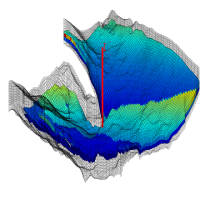GeoScale - Direct Reservoir Simulation on Geocellular Models
You are here:
GeoScale
/
Education
/
Open-source software
|
Open-source software
SINTEF is a research institute without teaching activities by itself. Instead, we supervise master and PhD students. This not only allows us to explore new research ideas but is also central in our efforts to make open-source reservoir simulation tools.
We offer supervision at NTNU and at the universities of Bergen and Oslo. For all the projects listed above, you must work in close collaboration with the GeoScale team and we expect you to do quite a bit of programming. Contact: Knut-Andreas Lie |
 The Matlab Reservoir Simulation Toolbox
The Matlab Reservoir Simulation Toolbox